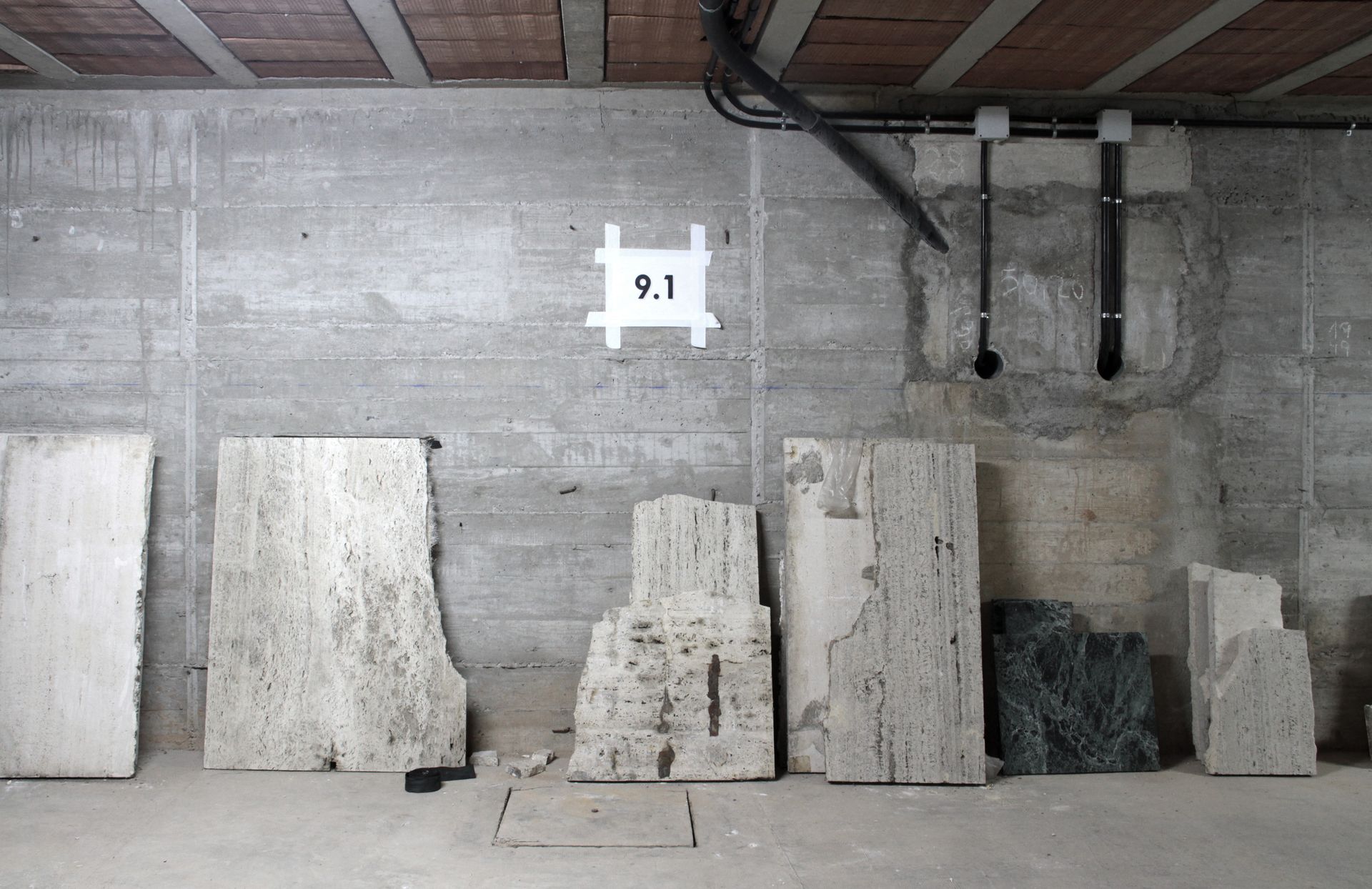About the project
PHANTOM. Mies as Rendered Society
Arts Institute of Chicago Permantent Collection
Fundació Mies van der Rohe
Iberdrola Collection
Grupo Konecta Collection
ACS Collection
PHANTOM: Mies as Rendered Society is an intervention at the Barcelona Pavilion based on a two-year ethnography carried out by the Office for Political Innovation. The project drew from an account of the role played by the so-far-unnoticed basement included in the 1986 reconstruction.
In the 1980s, the team responsible for reconstructing the 1929 German National Pavilion in Barcelona included a 1,050 square meter basement with a height of 2.4 meters to facilitate the control and maintenance of the Pavilion’s services and installations. The team also decided that access to the basement should be made difficult so as to avoid its future use as an exhibition space in which Mies and the Pavilion could be explained. Since the 1980s, the basement has hidden all the things that subvert the illusion that the building is not frozen in the same state as the 1929 spring morning when the Pavilion first opened. The basement is the Pavilion’s portrait of Dorian Grey, containing broken travertine slabs, faded velvet curtains, and broken sheets of glass. The space also hides everything needed to inscribe the Pavilion in a larger geo-social context: the flags that allow the pavilion to mediate politically, the remains of the commercial activities that the Pavilion hosts, and the kitchen where the Pavilion’s staff has lunch. For the upper floor to seem metaphysical, the basement needs to accommodate the Pavilion’s “phantom public,” the well-known notion about politics developed by Walter Lippmann [The Phantom Public (New York: Harcourt, Brace, 1925)] that Mies, in 1955, declared to have been the origin of his architectural insight.
PHANTOM: Mies as Rendered Society was presented in 2012. A significant portion of the items safeguarded in the basement upon which the Pavilion was built were distributed to different locations throughout the Pavilion’s upper floor. It is on view in the Permanent Collection Galleries of the Art Institute of Chicago.
Credits
Andrés Jaque / Office for Political Innovation
Design, coordination and edition
Paola Pardo, Ana Olmedo, Ruggero Agnolutto, Roberto González, Jorge López Conde, William Mondejar, Silvia Rodríguez, Dagmar Stéeova, Paloma Villarmea
Graphic Design
spread.eu.com
With the collaboration of
Fundació Mies van der Rohe




